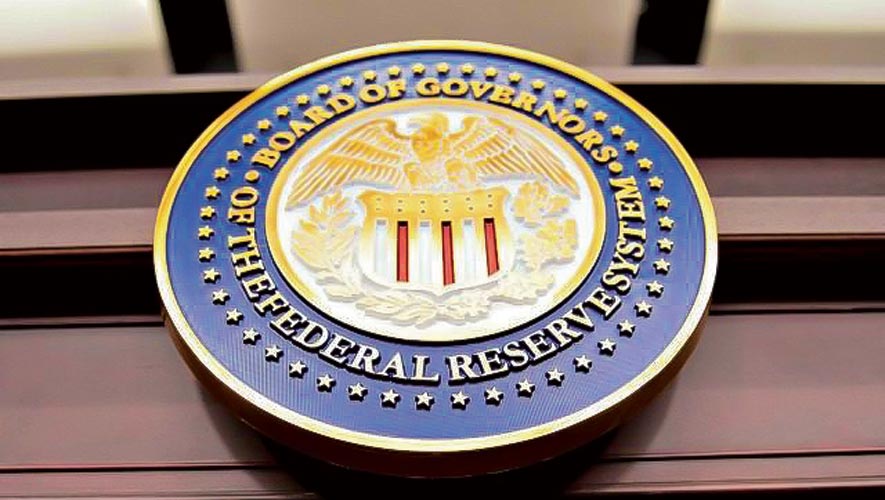Jitters from the impending Fed Reserve rate cuts can be felt in global markets already impacted by the trade war
For the latest Cambodian Business news, visit Khmer Times Business
On July 18, 2019 an online news portal talked about the US Central Bank’s fears that the trade war is rattling the global economy. The article said, “looking at it from the outside, the US economy probably appears to be the picture of health. A soaring stock market, unemployment levels at historic lows, and strong growth combine to create the impression of a global powerhouse.
“Our economy is the envy of the world,” President Donald Trump stressed. “Perhaps the greatest economy we’ve had in the history of our country.”
That’s why it may have felt odd to see Federal Reserve Board chairman Jerome Powell confirm last week that the US central bank will be lowering interest rates this year, beginning this month. Rate cuts, of course, are typically deployed when the Fed wants to pump up a flagging economy.
Powell’s two days of congressional testimony sent a thrill through global markets, but the temporary elation of investors belies a number of pressing concerns about the US and global economies that have the Fed chair and his fellow policymakers very concerned. These include, but are not limited to, the continued trade war between the US and China, the pronounced economic slowdown in China and a looming debt ceiling crisis in the US.
The question observers were asking last week was, “Why would the central bank want to lower rates when the economy looks so strong?”
Part of the reason stems from what’s known as the Fed’s “dual mandate.” The central bank is charged with controlling inflation and keeping the economy as close to full employment as possible. The latter goal is, right now, probably as close to being achieved as it is ever likely to be. But the former has become a problem. US inflation rates have been lagging well behind the two percent per year rate that the Fed believes is healthy.
Federal Reserve Bank of Chicago President Charles Evans echoed Powell’s suggestion that the rates are coming down.
“Because inflation expectations seem to be below our two percent objective and it’s been stubborn … it tells me our current setting for policy is on the restrictive side,” he said. Like Powell, Evans sits on the committee that makes decisions about US interest rates.
Persisting trade war
Digging deeper into Powell’s remarks, it wasn’t hard to identify other economic concerns weighing on him, as well as pressure from Trump to lower interest rates.
The Trump administration is still battling China over trade, with punishing tit-for-tat tariffs in place that are driving up prices for US consumers and driving down demand for some US goods.
Washington and Beijing announced a truce of sorts last week and said more talks are being planned. But negotiations between the two economic giants have so far failed to produce significant results.
“The bottom line for me is the uncertainties around global growth and trade continue to weigh on the outlook,” Powell was quoted as saying. He said the plan to resume talks is a “constructive step,” but added, “it doesn’t remove the uncertainty that we see as overall weighing on the outlook.”
The trade war between the US and China may have taken on even greater significance for the global economy with the revelation over the weekend that the Chinese economy is now growing at the slowest pace seen in nearly 30 years.
Slowing China economy
Growth estimates from the Chinese Communist Party-controlled government are typically viewed with some skepticism by trade economists, but even those numbers signal bad news for China’s massive economy.
In the second quarter, it grew 6.2 percent — far below the kind of numbers it was hitting just a few years ago. There is also speculation that the second quarter figure was buoyed by a surge in government spending in the spring that won’t be replicated in the second half of the year.
It’s difficult to judge just how much of the slowdown in China is the result of the tariffs that the Trump administration has imposed, though there is evidence they have hit hard. Exports in June were down 1.3 percent year-over-year, and imports fell by a surprising 7.3 percent.
Last Wednesday, the International Monetary Fund estimated that the trade fight could cost the global economy $455 billion next year.
However, there is also the possibility that the numbers reflect factors beyond the ongoing trade war, including the possibility of a regional slump. Singapore reported an unexpected 3.4 percent annualised contraction in its second-quarter GDP. Similarly, South Korea, another regional economic dynamo, reported a GDP contraction in the first quarter.
Debt-ceiling worries
Powell and his colleagues are watching warily as Congress allows the federal government to creep perilously close to its debt limit, a cap on borrowing that can only be lifted through legislative action.
A fairly unique feature of US fiscal policy, the debt limit places a hard ceiling on the amount of debt the federal government can have outstanding. Ironically, this means that as Congress continues to pass budgets that spend more money than the government takes in from taxes, fees and other sources, lawmakers must periodically vote to allow federal agencies to spend the money that Congress itself obligated them to spend.
Battles over the debt ceiling are always worrying to the Fed because it can potentially result in a US Treasury debt default. The fallout from such a scenario would not only be economically catastrophic, but its full effect would also be impossible to predict.
“I wouldn’t be able to capture the range of possible negative outcomes from that,” Powell told Congress.
Benjamin is a business consultant based in China




